Your cart is currently empty!
Search results for: “74”
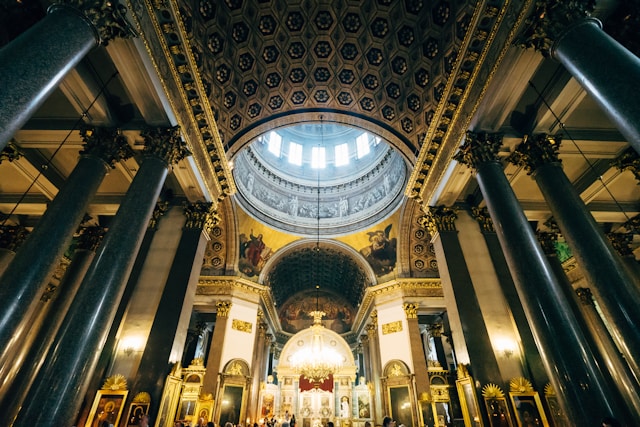
Discover the Holy Redeemer Church: A Beacon of Faith and Inspiration
History and Legacy
Nestled in the heart of Ireland’s capital, Dublin, the Holy Redeemer Church holds a cherished place in the annals of Irish history and Catholicism.
Its origins can be traced back to the early 19th century when a modest chapel was erected on the site. However, it was not until 1888 that the current grand edifice was completed under the direction of the renowned architect J.J. McCarthy.
Throughout its existence, the Holy Redeemer Church has witnessed countless pivotal moments and served as a sanctuary for generations of Irish Catholics.
Architectural Marvel
The Holy Redeemer Church is an architectural masterpiece, showcasing the grandeur and artistry of Victorian Gothic Revivalism.
Exterior
- Imposing twin spires that soar towards the heavens
- Elaborately carved stonework and intricate tracery adorning the façade
- Stained glass windows depicting biblical scenes, creating a kaleidoscope of light
Interior
- Soaring vaulted ceilings and intricate ribbed arches
- Intricately designed altars, pulpits, and confessionals
- Mosaic artwork and frescoes, adding a touch of color and symbolism
Parish and Activities
The Holy Redeemer Church is not merely a historical landmark but a vibrant and active parish.
It serves as a hub for community gathering and spiritual nourishment, offering a wide range of activities and services:
Religious Services
- Daily Mass
- Sunday Mass (multiple services)
- Confession
- Eucharistic Adoration
Community Outreach
- Educational programs for children and adults
- Support groups and counseling services
- Food bank and soup kitchen for the needy
Cultural Events
- Concerts, recitals, and art exhibitions
- Historical tours of the church and its surroundings
Restoration and Preservation
Over time, the Holy Redeemer Church has undergone several restoration and preservation efforts to maintain its historical integrity.
In the 1970s, the exterior was meticulously cleaned and repaired, restoring its pristine appearance.
More recently, the interior underwent a comprehensive renovation, carefully preserving the original features while enhancing accessibility and comfort for visitors.
Visitor Information
The Holy Redeemer Church welcomes visitors from all walks of life to explore its architectural beauty and experience its spiritual significance.
Location and Transportation
- Address: 14 Upper Gardiner Street, Dublin 1, Ireland
- Easily accessible by public transportation, including bus and tram
Visiting Hours
- Open daily: 7:00 AM – 7:00 PM
- Guided tours available upon request
Contact Information
- Website: www.holyredeemer.ie
- Email: [email protected]
- Phone: +353 (0)1 874 7874
Conclusion
The Holy Redeemer Church stands as a testament to the enduring spirit of faith and the power of architectural beauty.
Whether you seek spiritual enrichment, historical appreciation, or simply a breathtaking experience, a visit to this iconic landmark is an unforgettable journey that will leave you inspired and moved.
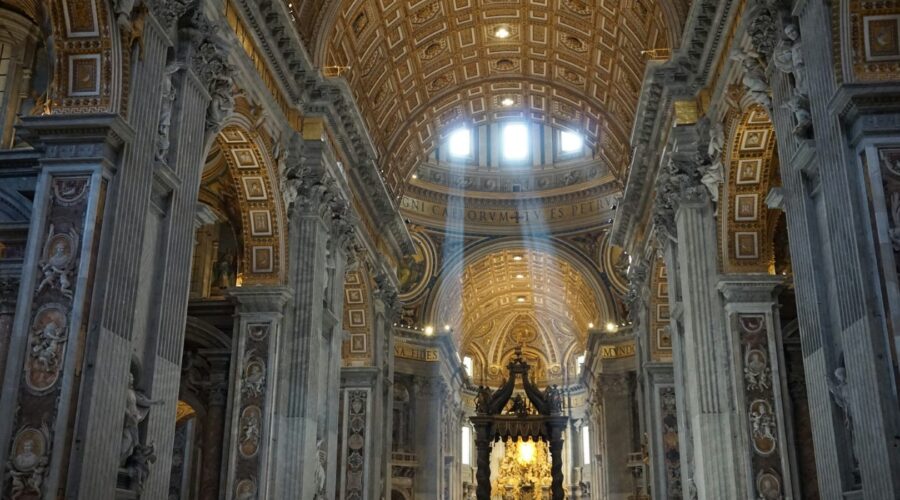
Discover the Historical Significance and Vibrant Community of Antioch Baptist Church
Established in 1835, Antioch Baptist Church has played an instrumental role in the cultural and spiritual landscape of the United States. With a rich history rooted in the abolitionist movement and a commitment to social justice, the church continues to serve as a beacon of faith, community, and cultural enrichment.
Historical Significance
The founding of Antioch Baptist Church is intertwined with the abolitionist movement. In the antebellum era, the church provided refuge and support for slaves seeking freedom on the Underground Railroad. Pastor John Peck was an active abolitionist who assisted in the liberation of hundreds of enslaved individuals.
During the Civil War, the church building served as a hospital for Union soldiers and a gathering place for freed slaves. After the war, Antioch Baptist Church became a center for political and social activism, advocating for voting rights and equal opportunities for African Americans.
Mission and Values
Antioch Baptist Church’s mission is to “preach the gospel of Jesus Christ, to provide for the nurturing and growth of believers, and to be a witness for Christ in the community and throughout the world.”
The church’s core values include:
- Evangelism and outreach
- Christian education and discipleship
- Social justice and advocacy
- Cultural enrichment and empowerment
Programs and Ministries
Antioch Baptist Church offers a wide range of programs and ministries that cater to the spiritual, social, and educational needs of its congregation and the broader community.
Sunday School
Sunday School classes for all ages provide biblical instruction, character formation, and Christian fellowship.
Youth Ministry
The youth ministry offers spiritual guidance, social activities, and leadership development programs for young people.
Music Ministry
The renowned music ministry includes choirs, bands, and soloists who share their musical talents in worship services and concerts.
Community Outreach
The church actively engages in community outreach programs such as food pantries, clothing drives, and support for the homeless.
Cultural Impact
Beyond its religious significance, Antioch Baptist Church has played a significant role in the cultural landscape of the United States.
For over 180 years, the church has been a hub for African American culture and expression. Notable figures such as Frederick Douglass, W.E.B. Du Bois, and Martin Luther King Jr. have spoken at Antioch.
The church’s sanctuary is renowned for its architectural beauty and has been featured in numerous films and television shows.
Visiting Antioch Baptist Church
Visitors are welcome to attend worship services at Antioch Baptist Church on Sundays at 9:00 AM and 11:00 AM.
For more information about the church, its history, and its programs, please visit the official website at https://www.antiochbaptist.org.
Conclusion
Antioch Baptist Church is a vibrant and enduring institution that has played a vital role in American history and society. From its origins in the abolitionist movement to its ongoing commitment to social justice and cultural enrichment, the church continues to inspire and serve its congregation and the broader community.
As a testament to its historical significance and cultural impact, Antioch Baptist Church has been recognized with numerous awards and distinctions, including:
Award Year National Register of Historic Places 1974 Boston Landmarks Commission 1984 National Historic Landmark 1993 Massachusetts Historical Commission 2000 Antioch Baptist Church is a testament to the power of faith, community, and the enduring legacy of those who have dedicated themselves to making a positive impact on the world.
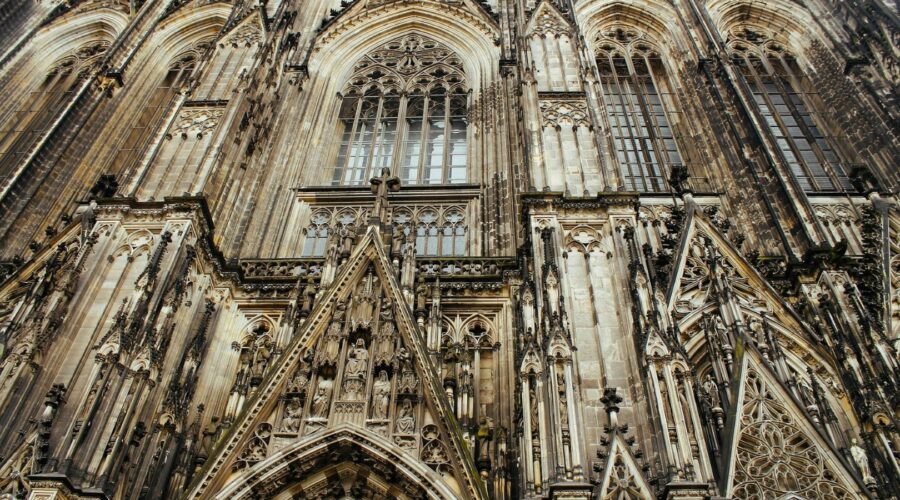
Battle Creek Church: A Comprehensive Guide to Its History, Beliefs, and Programs
History of Battle Creek Church
Battle Creek Church was established in 1855 by James White and Ellen G. White, who were two of the leading figures in the Seventh-day Adventist movement. The church was originally located in Battle Creek, Michigan, but moved to Silver Spring, Maryland in 1989. The church has over 40,000 members worldwide and is a major center for Seventh-day Adventist activity.
Early Years
The early years of Battle Creek Church were marked by rapid growth and evangelism. In 1866, the church established its first publishing house, which would later become the Review and Herald Publishing Association. The publishing house played a major role in spreading the Seventh-day Adventist message around the world.
In 1874, the church established Battle Creek College, which later became Andrews University. Battle Creek College was the first Seventh-day Adventist college and played a major role in training Seventh-day Adventist ministers and missionaries.
Later Years
Battle Creek Church continued to grow in the 20th century, and its membership reached over 10,000 by the 1950s. The church played a major role in the development of the Seventh-day Adventist denomination, and its leaders were instrumental in shaping Adventist doctrine and practice.
In 1989, the church moved its headquarters to Silver Spring, Maryland, where it is located today. The church has continued to grow in recent years, and its membership now exceeds 40,000.
Beliefs of Battle Creek Church
Battle Creek Church adheres to the beliefs of the Seventh-day Adventist Church. These beliefs include:
- The Bible is the only source of truth.
- There is one God who is the Creator of all things.
- Jesus Christ is the Son of God and the Savior of humanity.
- The Holy Spirit is the third person of the Trinity.
- The second coming of Jesus Christ is imminent.
- The Sabbath is a holy day that should be kept from Friday sunset to Saturday sunset.
- Vegetarianism is a healthy and Biblically-based lifestyle.
- The church is a community of believers who should support each other in their Christian walk.
Programs of Battle Creek Church
Battle Creek Church offers a wide range of programs and ministries to its members and the community. These programs include:
- Worship services are held every Saturday morning and are open to the public.
- Sabbath School is a Bible study class that is held every Saturday morning before worship services.
- Youth ministries are offered for children and young people of all ages.
- Adult ministries are offered for adults of all ages.
- Community outreach programs are offered to help the community in a variety of ways.
- Health and wellness programs are offered to help members live healthy and balanced lives.
Conclusion
Battle Creek Church is a vibrant and growing church that is committed to sharing the Seventh-day Adventist message with the world. The church offers a wide range of programs and ministries to its members and the community. If you are looking for a church home, Battle Creek Church is a great option.
Attendance figures for Battle Creek Church Year Attendance 1855 25 1866 100 1874 250 1900 1,000 1950 10,000 2000 20,000 2022 40,000 Visit the Battle Creek Church website for more information.
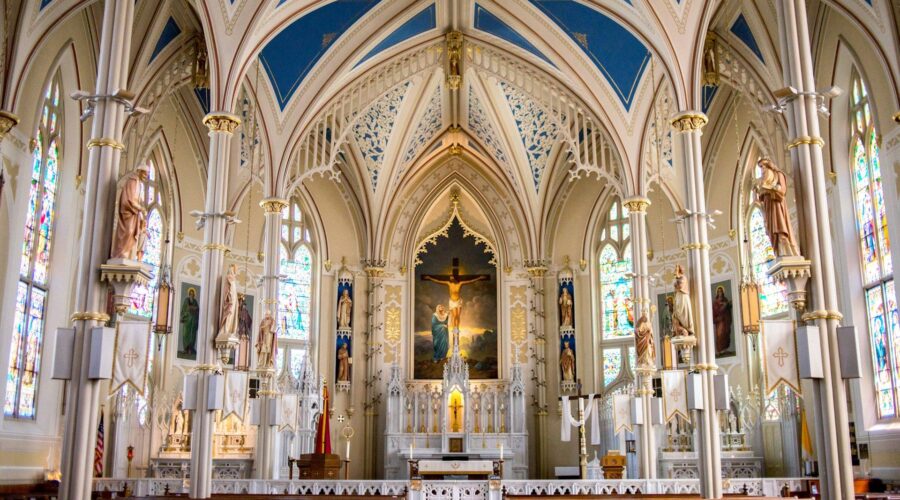
Discover the Legacy and Impact of Trinity Presbyterian Church
A Historic Landmark in the Heart of Downtown
Nestled in the bustling metropolis of Los Angeles, Trinity Presbyterian Church stands as a beacon of faith and history. Founded in 1885, this magnificent edifice has witnessed the passage of time and played a pivotal role in shaping the religious and cultural landscape of Southern California.
Its imposing sandstone structure, adorned with intricate Romanesque and Byzantine architectural details, evokes a sense of grandeur and reverence. The soaring steeple, reaching towards the heavens, serves as a symbol of hope and inspiration for generations of worshippers.
A Vibrant and Welcoming Community
Beyond its architectural splendor lies the vibrant and welcoming community that calls Trinity Presbyterian Church their spiritual home. With a diverse congregation representing a wide spectrum of backgrounds and ages, the church fosters a sense of belonging and inclusivity.
Weekly worship services draw members together to celebrate their faith, receive spiritual nourishment, and connect with one another. The church offers a range of programs and ministries that cater to all ages and interests, promoting spiritual growth, community outreach, and personal development.
Whether you’re a long-time resident or a newcomer to the area, Trinity Presbyterian Church invites you to become part of its warm and supportive community.
A Legacy of Social Justice
Throughout its history, Trinity Presbyterian Church has been a vocal advocate for social justice and equality. From its involvement in the Civil Rights Movement to its ongoing work with the homeless and marginalized, the church has consistently stood up for the oppressed and fought for a more compassionate and just society.
Through its partnerships with local organizations and its own outreach programs, Trinity Presbyterian Church makes a tangible difference in the lives of countless individuals and families. Its commitment to serving the community extends beyond the walls of its sanctuary, reaching out to those in need and empowering them to thrive.
Programs and Ministries
Trinity Presbyterian Church offers a diverse array of programs and ministries designed to nurture spiritual growth, foster community, and address the needs of its members and the wider community.
Worship Services
- Traditional Worship: Sunday mornings at 8:00 AM
- Contemporary Worship: Sunday mornings at 10:30 AM
- Evening Worship: Sunday evenings at 4:00 PM
Spiritual Growth
- Bible Studies: Weekly small group discussions on various topics
- Retreats: Periodic opportunities for spiritual renewal and reflection
- Prayer Groups: Gatherings to connect with God and intercede for others
Community Outreach
- Trinity Kitchen: Providing meals to the homeless and hungry
- Trinity Clothing Closet: Distributing clothing to those in need
- Partnerships with Local Organizations: Collaborating with organizations serving the community
Personal Development
- Youth Programs: Activities and spiritual formation for youth of all ages
- Adult Education: Classes on a variety of topics, including theology, history, and social justice
- Music Ministries: Choirs, ensembles, and instrumental groups
Location and Contact Information
Trinity Presbyterian Church is conveniently located at 3240 South Figueroa Street, Los Angeles, California 90007.
For further information or to connect with the church, please visit their website at https://www.trinitypresbyterianchurch.com/ or call (213) 748-0321.
Immerse yourself in the rich history, vibrant community, and transformative ministries of Trinity Presbyterian Church. Join them on this extraordinary journey of faith and service, and experience the transformative power of a dedicated and compassionate congregation.
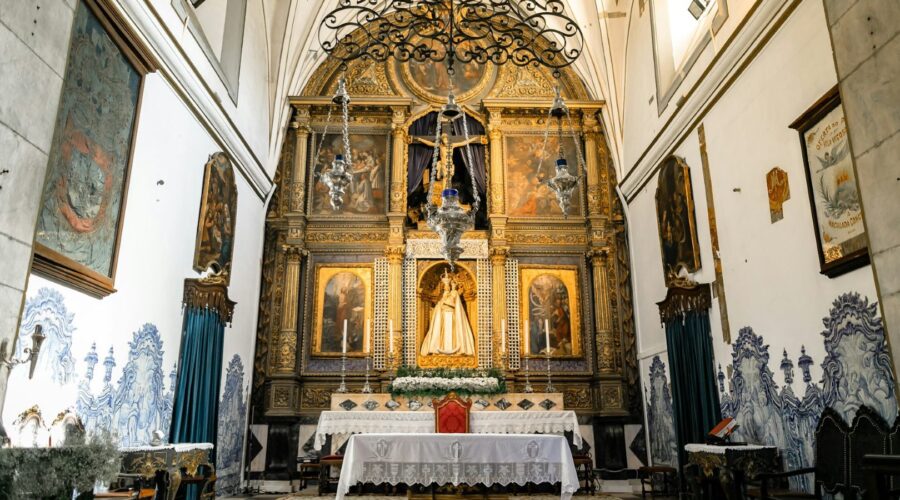
Northside Church: A Comprehensive Guide to Atlanta’s Megachurch
Introduction
Northside Church is a non-denominational megachurch located in Atlanta, Georgia. Founded in 1977, the church has grown to become one of the largest in the country, with over 30,000 members and multiple campuses across the metropolitan area.
History and Vision
Early Years (1977-1995)
Northside Church was founded by Dr. Joel C. Hunter, who served as its senior pastor for over four decades. The church began with a small group of just 50 people and gradually expanded its reach through community outreach and evangelistic programs.
Growth and Expansion (1995-2022)
Under Hunter’s leadership, Northside Church experienced significant growth. The church purchased a large campus in Alpharetta, Georgia in 1995 and began broadcasting its services to audiences around the world. It also established multiple branch campuses in the Atlanta area and launched various ministries and programs to meet the needs of its growing congregation.
Transition and New Direction (2022-Present)
In 2022, Dr. Hunter retired as senior pastor of Northside Church and was succeeded by Dr. Steve Briggs. Under Briggs’ leadership, the church has continued its focus on community engagement and spiritual growth while also exploring new initiatives in technology and digital ministry.
Campuses and Locations
- Alpharetta Campus (Main Campus)
- Sandy Springs Campus
- Chamblee Campus
- Johns Creek Campus
- Cumming Campus
- Gwinnett Campus
Ministries and Programs
Northside Church offers a wide range of ministries and programs for people of all ages and backgrounds.
Worship and Music
Northside Church is known for its vibrant worship services, which feature contemporary music, engaging sermons, and a focus on spiritual connection.
Children and Youth
The church has extensive programs for children and youth, including Sunday School, youth groups, and mentorship programs.
Small Groups
Northside Church encourages members to connect with each other through small groups, where they can build relationships, share their faith, and support one another.
Community Outreach and Social Justice
Northside Church has a strong commitment to community outreach and social justice. The church supports a variety of ministries that address issues such as poverty, homelessness, and healthcare access.
Leaders and Staff
Senior Pastor
Executive Pastor
Chief Finance Officer
Giving and Stewardship
Northside Church encourages members to give generously to support its ministries and outreach programs. The church offers various ways to give, including online giving, text-to-give, and giving envelopes.
Conclusion
Northside Church is a dynamic and growing megachurch that plays a significant role in the spiritual and social fabric of Atlanta. With its vibrant worship services, diverse ministries, and commitment to community engagement, Northside Church continues to inspire and uplift its members and serve the broader community.
Northside Church Campuses Campus Address Contact Alpharetta Campus 12010 Haynes Bridge Road, Alpharetta, GA 30009 (770) 645-5000 Sandy Springs Campus 5975 Roswell Road, Sandy Springs, GA 30328 (770) 645-5000 Chamblee Campus 5140 Chamblee Dunwoody Road, Dunwoody, GA 30338 (404) 457-5566 Johns Creek Campus 11230 Medlock Bridge Road, Johns Creek, GA 30097 (770) 474-3300 Cumming Campus 4370 Peachtree Parkway, Cumming, GA 30041 (470) 253-0700 Gwinnett Campus 4090 Peachtree Industrial Boulevard, Buford, GA 30518 (770) 474-3300 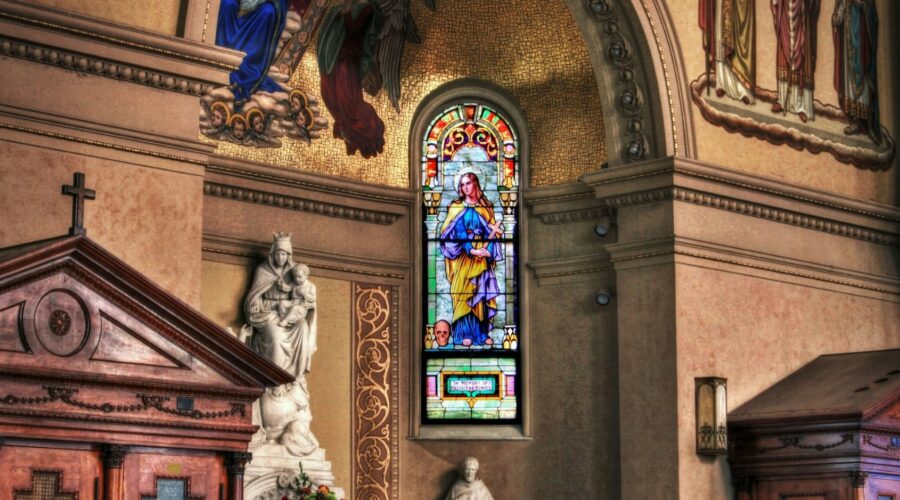
The First Lutheran Church: A Comprehensive Guide
Introduction
The First Lutheran Church is a historic and vibrant congregation in the heart of downtown Minneapolis. Founded in 1854 by German immigrants, the church has played a significant role in the city’s history and continues to be a beacon of faith and service today.
History
Early Years
The First Lutheran Church was established on October 12, 1854, by a group of German immigrants led by Pastor Friedrich A. Schmidt. The congregation initially met in a rented hall before building its first church building in 1856 at the corner of Sixth Street and Hennepin Avenue.
Growth and Expansion
As the congregation grew, so did the need for a larger church building. In 1874, the First Lutheran Church moved to a new building at the corner of Fourth Street and Tenth Avenue South. This building served the congregation for over 50 years before being replaced by the current church building in 1926.
Current Building
The First Lutheran Church’s current building is an impressive example of Gothic Revival architecture. Designed by the renowned architect Clarence H. Johnston, the building features a soaring bell tower, intricate stained glass windows, and a spacious sanctuary with seating for over 1,000 people.
Mission and Ministry
Mission Statement
The mission of the First Lutheran Church is “to proclaim the Good News of Jesus Christ, serve our community, and transform lives.”
Ministries
- Worship and Music
- Education and Faith Formation
- Service and Outreach
- Social Justice and Advocacy
- Youth and Family Programs
- Senior Adult Ministry
Community Involvement
The First Lutheran Church is actively involved in the Minneapolis community. The church operates a food shelf, provides housing assistance, and supports numerous local organizations. The church also hosts community events and programs throughout the year.
Worship and Music
Worship Services
The First Lutheran Church offers a variety of worship services on Sundays, including traditional, contemporary, and blended services. The services feature inspiring sermons, beautiful music, and opportunities for personal reflection.
Music Program
The First Lutheran Church has a strong music program with choirs, instrumental ensembles, and soloists. The church’s music director, Dr. Timothy Westerhaus, is internationally renowned for his choral conducting and compositions.
Education and Faith Formation
Sunday School
The First Lutheran Church offers Sunday School classes for children of all ages. The classes provide a fun and engaging way for children to learn about the Bible, Christian faith, and Lutheran traditions.
Confirmation Classes
Confirmation classes are offered for youth in grades 7-9. These classes explore the basics of Christian faith and prepare youth for confirmation, a rite of passage in which they affirm their faith and become full members of the church.
Adult Education
The First Lutheran Church offers a variety of adult education programs, including Bible studies, book clubs, and retreats. These programs provide opportunities for adults to grow in their faith and learn more about a variety of topics.
Service and Outreach
Food Shelf
The First Lutheran Church operates a food shelf that provides food assistance to families in need. The food shelf is open on Tuesdays and Thursdays from 9:00 am to 12:00 pm.
Housing Assistance
The First Lutheran Church provides housing assistance to individuals and families who are experiencing homelessness or housing insecurity. The church works with local organizations to provide shelter, transitional housing, and counseling services.
Community Partnerships
The First Lutheran Church partners with a variety of local organizations to provide services and support to the community. These organizations include homeless shelters, food banks, and social service agencies.
Social Justice and Advocacy
Social Justice Committee
The First Lutheran Church has a Social Justice Committee that works to address social justice issues and advocate for the marginalized. The committee organizes events, supports legislation, and provides resources to educate and empower the congregation.
Racial Justice Task Force
The First Lutheran Church has a Racial Justice Task Force that works to dismantle racism and promote racial justice. The task force organizes educational programs, supports anti-racism initiatives, and advocates for policies that promote racial equity.
Youth and Family Programs
Youth Group
The First Lutheran Church has a vibrant youth group for youth in grades 6-12. The youth group meets on Sundays and Wednesdays for fellowship, Bible study, and service projects.
Family Events
The First Lutheran Church hosts a variety of family events throughout the year. These events include movie nights, game nights, and holiday celebrations.
Senior Adult Ministry
Senior Adult Group
The First Lutheran Church has a Senior Adult Group for adults aged 55 and older. The group meets monthly for fellowship, programs, and outings.
Transportation Services
The First Lutheran Church provides transportation services to senior adults who need assistance getting to and from church services and events.
Contact Information
Address: 1515 East Franklin Avenue Minneapolis, MN 55404 Phone: 612-871-3045 Website: https://www.firstlutheranmpls.org/ Conclusion
The First Lutheran Church is a vibrant and welcoming congregation that has been serving the Minneapolis community for over 160 years. The church’s mission is to proclaim the Good News of Jesus Christ, serve our community, and transform lives. The First Lutheran Church offers a wide range of worship services, education and faith formation programs, and service and outreach opportunities. The church is also committed to social justice and advocacy, and has a strong youth and family ministry. If you are looking for a church home, the First Lutheran Church is a great place to find community, grow in your faith, and make a difference in the world.
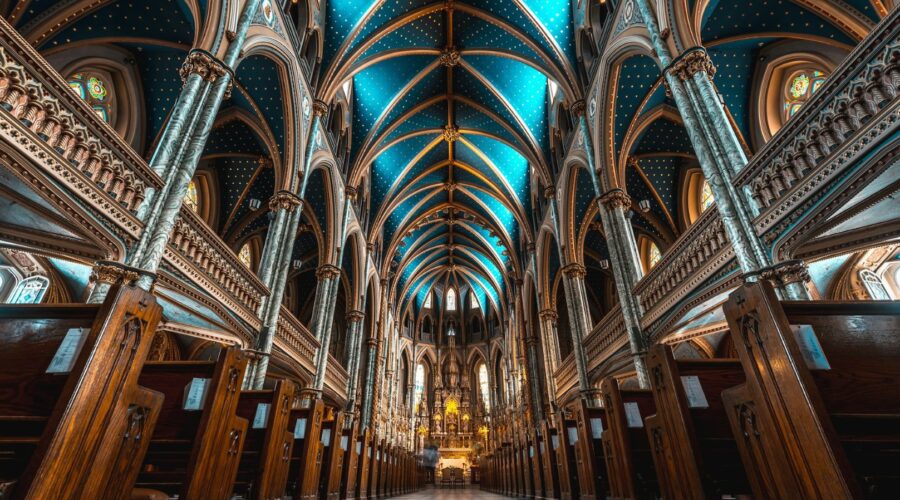
Discover the Rich History and Enchanting Architecture of St. James’s Church
Immerse yourself in the captivating history and architectural splendor of St. James’s Church, a beacon of ecclesiastical heritage and cultural significance. This comprehensive guide unravels the intriguing stories, hidden details, and awe-inspiring features that have made St. James’s Church an enduring landmark in the heart of London.
The Intriguing History of St. James’s Church
St. James’s Church traces its origins to the 12th century, with the first stone chapel likely built around 1140. However, the church’s most significant transformation occurred in the 17th century under the patronage of King Charles II.
The Wren’s Majestic Design
In 1661, Sir Christopher Wren, renowned for his architectural genius, was commissioned to redesign the church. Wren’s classical style resulted in an exquisite edifice, featuring a grand, columned portico, a soaring tower, and a spacious interior adorned with intricate carvings and stained-glass windows.
Royal Connections and Grand Weddings
St. James’s Church has witnessed a plethora of royal weddings, including Princess Anne’s marriage to Captain Mark Phillips in 1973. The church’s association with royalty continues to this day, with Queen Elizabeth II attending regular services.
Architectural Highlights of St. James’s Church
St. James’s Church boasts a harmonious blend of classical and Gothic architectural elements that create a visually captivating masterpiece.
The Towering Steeple
The church’s most striking feature is its towering spire, which reaches a height of 180 feet. Constructed from Portland stone, the steeple is adorned with intricate carvings and serves as a prominent landmark in the city skyline.
The Columned Portico
The grand portico at the church’s entrance is supported by six colossal Corinthian columns. These columns are adorned with intricate carvings and support a triangular pediment featuring a relief depicting Saint James the Great.
The Impressive Interior
The interior of St. James’s Church is a testament to Wren’s architectural brilliance. The nave is divided by rows of tall, fluted columns, creating a sense of grandeur and spaciousness.
Exploring the Notable Features of St. James’s Church
Beyond its architectural splendor, St. James’s Church is home to numerous notable features that enhance its historical and cultural significance.
The Historic Organ
The church’s renowned organ, built by renowned organ builder Bernard Smith in 1691, is one of the oldest surviving organs in London. The organ has undergone several restorations over the centuries and continues to be played for services and concerts.
The Poets’ Corner
St. James’s Church is renowned for its Poets’ Corner, a memorial to some of England’s most celebrated poets. Among those commemorated are John Dryden, William Blake, and Alfred, Lord Tennyson.
The Stained-Glass Windows
The church’s magnificent stained-glass windows depict a variety of biblical scenes and saints. The windows, created by renowned artists, such as Edward Burne-Jones and William Morris, add a vibrant and colorful element to the church’s interior.
Tips for Visiting St. James’s Church
To fully appreciate the beauty and significance of St. James’s Church, consider these practical tips:
- Check the church’s website for service times and special events.
- Book a guided tour in advance to delve deeper into the church’s history and architecture.
- Allow ample time to explore the church’s interior, including the Poets’ Corner and the stained-glass windows.
- Consider attending a musical performance in the church, such as an organ recital or a choral concert.
Additional Resources
- Official website of St. James’s Church
- St. James’s Church on Visit London
- St. James’s Church on Historic England
Conclusion
St. James’s Church stands as a testament to the enduring power of faith and the artistry of human ingenuity. Its rich history, magnificent architecture, and notable features have made it a beloved landmark in London, admired by countless visitors and locals alike. By exploring this ecclesiastical masterpiece, we not only appreciate its architectural beauty but also connect with the stories and traditions that have shaped it over centuries.
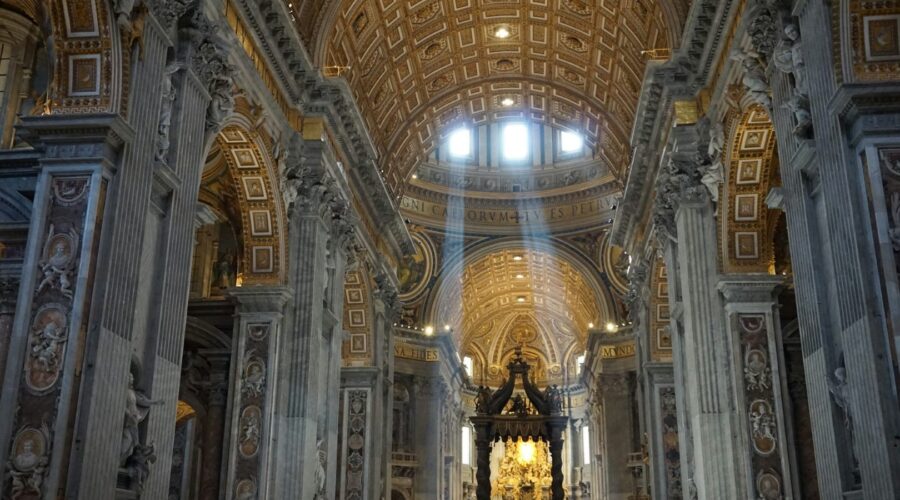
Carl Trueman: A Comprehensive Exploration of His Theological Contributions and Controversies
Introduction
Carl Trueman is a prominent British theologian, author, and academic who has made significant contributions to the field of Christian theology. Known for his conservative evangelical views and his incisive critiques of modern culture, Trueman has attracted both ardent supporters and vocal detractors. This comprehensive blog post delves into Trueman’s theological contributions, exploring his major themes, beliefs, and the controversies that have surrounded his work.
Major Themes in Trueman’s Theology
Biblical Authority
Trueman places a high emphasis on the authority of Scripture, believing in its inerrancy and sufficiency for faith and practice. He argues that the Bible is the primary source of Christian doctrine and that its teachings must be interpreted and applied in a literal and historical manner.
Reformed Theology
Trueman adheres to the Reformed tradition within Protestantism, which emphasizes the doctrines of grace, justification by faith alone, and the sovereignty of God. He believes in the total depravity of humankind and the necessity of God’s electing love in salvation.
Cultural Engagement
Trueman sees Christianity as a holistic faith that influences every aspect of life, including culture. He argues that the church has a responsibility to engage with culture in a winsome and transformative way, while simultaneously resisting its unbiblical values and practices.
Key Beliefs
Salvation
According to Trueman, salvation is a gift from God that is not earned but received through faith in Jesus Christ. He believes that Jesus’s atoning death on the cross has satisfied the wrath of God against sin, offering forgiveness and eternal life to all who repent and believe.
Sanctification
Trueman emphasizes the ongoing process of sanctification in the Christian life. He teaches that believers are gradually transformed into the image of Christ through the indwelling of the Holy Spirit. Sanctification includes both personal holiness and a commitment to social justice.
Eschatology
Trueman holds a dispensational view of eschatology, which divides history into distinct periods and interprets the end times prophetically. He believes that Christ’s second coming will be a visible, bodily event that will usher in a new heaven and a new earth.
Controversies Surrounding Trueman’s Work
Evangelical Perspectives
Trueman’s conservative views have often clashed with the more progressive wing of the evangelical movement. He has been criticized for his opposition to same-sex marriage, his rejection of women in pastoral leadership, and his perceived intolerance towards those with different theological perspectives.
Historical Scholarship
Some scholars have questioned the accuracy of Trueman’s historical interpretations. Critics point out that he often selects certain historical figures or events to support his arguments while ignoring or downplaying others.
Cultural Critique
Trueman’s cultural critiques have drawn both praise and criticism. While many appreciate his incisive insights into the challenges facing the church in the contemporary world, others accuse him of being overly pessimistic and judgmental.
Conclusion
Carl Trueman is a complex and controversial figure whose theological contributions have significantly impacted evangelical Christianity. His emphasis on biblical authority, Reformed theology, and cultural engagement has inspired and challenged many. However, his conservative views and his critical approach to modern culture have also generated controversy. Ultimately, Trueman’s legacy as a theologian will continue to be debated and discussed for years to come.
Additional Resources
Books by Carl Trueman
- The Republishing of Christendom: Media, Politics, and the Rise of Modern Protestantism
- The Creedal Imperative
- Luther on the Christian Life
Interviews and Lectures
- Carl Trueman on Biblical Authority and Cultural Engagement
- Carl Trueman on Cultural Engagement
- Carl Trueman on the Reformation and After
Articles and Reviews
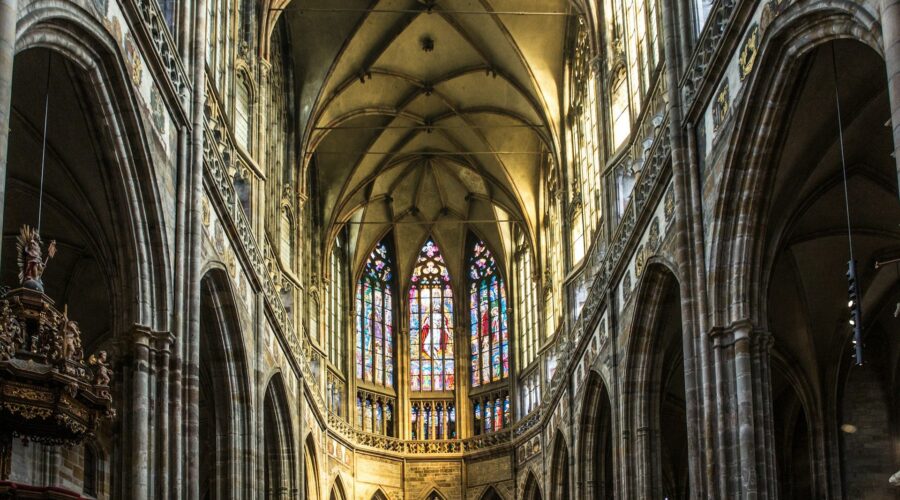
St. Alphonsus Liguori: A Guiding Light in Morality and Devotion
Saint Alphonsus Liguori, revered as the Doctor of Moral Theology, was an eminent figure in the Catholic Church renowned for his extensive writings on moral theology and his extraordinary devotion to the Blessed Virgin Mary.
Early Life and Education
Birth and Family
Alphonsus Maria de’ Liguori was born on September 23, 1696, in Marianella, Italy, to a wealthy and influential family. His father, Giuseppe Liguori, was a naval captain, while his mother, Anna Cavalieri, was a devout Catholic.
Education
Alphonsus displayed exceptional academic prowess from a young age. He excelled in the study of law, earning a doctorate in civil and ecclesiastical law at the University of Naples in 1713.
Conversion to the Priesthood
Disillusionment and Discernment
Despite his promising legal career, Alphonsus experienced a profound conversion experience in 1723. After losing an important case, he was deeply disillusioned by the corrupt and unjust practices prevalent in the legal profession.
Seeking solace, Alphonsus turned to prayer and spiritual reflection. He discerned a call to the priesthood, believing he could serve God and humanity more effectively in this role.
Ordination and Early Ministry
Alphonsus was ordained a priest on December 21, 1726. He dedicated himself to serving the poor and marginalized in the slums of Naples. His compassionate and zealous ministry earned him great respect and admiration from the people.
Founding the Redemptorists
Mission to the Poor and Abandoned
In 1732, Alphonsus founded the Congregation of the Most Holy Redeemer, also known as the Redemptorists. The primary mission of the congregation was to preach to the poor and abandoned in remote and neglected areas.
Rule of Life
Alphonsus authored the Rule of Life for the Redemptorists, emphasizing humility, simplicity, and apostolic zeal. The congregation quickly grew, establishing communities throughout Italy and beyond.
Moral Theology and Spiritual Writings
Summa Theologica Moralis
Alphonsus Liguori is widely recognized as one of the greatest moral theologians of all time. His magnum opus, Summa Theologica Moralis, published in 1748, is a comprehensive treatise on moral theology that remains an authoritative source in Catholic moral teaching.
Other Notable Works
In addition to his Summa Theologica Moralis, Alphonsus wrote numerous other spiritual and theological works, including:
- The Glories of Mary
- The Practice of the Love of Jesus Christ
- The Way of Salvation
- The Hidden Treasure
Devotion to the Blessed Virgin Mary
Marian Advocate
Alphonsus Liguori had an ardent devotion to the Blessed Virgin Mary. He believed that devotion to Mary was essential for Christian perfection.
The Glories of Mary
Alphonsus’s book “The Glories of Mary” is considered one of the most comprehensive and eloquent treatises on Marian devotion ever written.
Later Years and Sainthood
Bishop of Sant’Agata de’ Goti
In 1762, Alphonsus was appointed Bishop of Sant’Agata de’ Goti in southeastern Italy. He served as bishop for thirteen years, tirelessly ministering to his flock.
Decline in Health and Death
In his later years, Alphonsus’s health declined due to severe arthritis and other ailments. He died on August 1, 1787, at the age of 90.
Canonization
Alphonsus Liguori was canonized a saint by Pope Gregory XVI in 1839. He is considered the patron saint of confessors, moral theologians, and the city of Naples.
Legacy
Doctor of Moral Theology
Saint Alphonsus Liguori’s contributions to moral theology are immense. His writings continue to guide and inspire theologians and spiritual directors worldwide.
Marian Devotion
Alphonsus’s profound devotion to the Blessed Virgin Mary has left an enduring legacy in the Catholic Church. His writings and teachings on Marian devotion continue to inspire and enrich the spiritual lives of countless believers.
Founder of the Redemptorists
The Congregation of the Most Holy Redeemer, founded by Saint Alphonsus Liguori, remains a vibrant and active religious congregation today. The Redemptorists continue to carry out Alphonsus’s mission of preaching to the poor and abandoned in all corners of the globe.
Table: Key Dates in the Life of Saint Alphonsus Liguori
| Event | Date |
|—————–|—————|
| Birth | September 23, 1696 |
| Conversion | 1723 |
| Ordination | December 21, 1726 |
| Founding of the Redemptorists | 1732 |
| Publication of Summa Theologica Moralis | 1748 |
| Appointed Bishop of Sant’Agata de’ Goti | 1762 |
| Death | August 1, 1787 |
| Canonization | 1839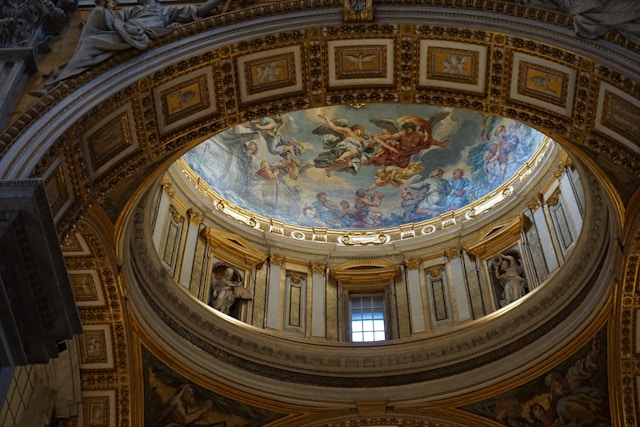
Discover Mercy Hill Church: A Vibrant Hub of Faith and Community
About Mercy Hill Church
Mercy Hill Church is a multi-site evangelical Christian church with its main campus located in the city of Fayetteville, North Carolina. Founded in 2007 by Lead Pastor Mark Creech, the church has since expanded to include eight campuses across North Carolina, as well as an online presence.
Mercy Hill emphasizes biblical teaching, authentic worship, and a deep commitment to serving its community. It believes in empowering individuals to live out their faith with purpose and generosity.
Core Values
- Love God: Putting God first in all aspects of life.
- Love Others: Demonstrating compassion, kindness, and hospitality towards others.
- Follow Jesus: Embracing the teachings of Jesus Christ as the foundation for living.
li>Serve Others: Actively engaging in service to the community and the world.
Ministries and Programs
Mercy Hill Church offers a wide range of ministries and programs to meet the diverse needs of its congregation and community.
Worship Services
Mercy Hill holds weekly worship services at all of its campuses. These services feature contemporary music, biblical teaching, and opportunities for prayer and reflection.
Small Groups
Small groups meet regularly to foster spiritual growth, fellowship, and accountability. These groups delve into Bible study, prayer, and personal sharing in a more intimate setting.
Community Care
Mercy Hill is deeply involved in serving the community through various outreach programs. These include food pantries, support groups, and volunteer opportunities.
Missions
Mercy Hill actively supports global missions through partnerships with local churches and international organizations. The church sends teams on mission trips and provides financial support to ministries around the world.
Leadership
Mercy Hill Church is led by a team of pastors and elders who provide spiritual oversight and guidance.
Lead Pastor: Mark Creech
Lead Pastor Mark Creech has a passion for sharing the gospel and equipping believers to live out their faith. He is known for his biblical teaching and his commitment to building a vibrant and inclusive church.
Elders
The elders of Mercy Hill are responsible for providing spiritual guidance, overseeing the church’s finances, and ensuring the well-being of the congregation.
Locations and Contact Information
Main Campus:
4000 Kiplin Drive
Fayetteville, NC 28306
(910) 485-1145
Website
Contact FormOther Campuses:
Campus Address Phone Number Aberdeen 201 Campus Drive (910) 304-8600 Cary 101 Penny Road (919) 859-5400 Charlotte 6801 Morrison Boulevard (704) 509-3500 Durham 1900 West Main Street (919) 220-7200 Goldsboro 1202 Corporate Drive (919) 751-4300 Monroe 1105 Old Charlotte Highway (704) 225-7400 Wilmington 7520 Market Street (910) 524-6300 
Unveiling the Horrors of ‘Sinners in the Hands of an Angry God’
Jonathan Edwards’ Fiery Sermon
The electrifying sermon, “Sinners in the Hands of an Angry God,” delivered by the renowned theologian Jonathan Edwards in 1741, remains a timeless masterpiece that deeply probes the nature of sin and the relentless wrath of God. This masterstroke of religious rhetoric paints a vivid picture of sinners hanging precariously over the abyss of eternal damnation, held only by the slender thread of God’s patience.
The Context
In the midst of the Great Awakening, a period of intense religious revival in colonial America, Edwards sought to awaken his congregation to the dire consequences of their sins. His sermon, rooted in the Calvinist belief in predestination and divine retribution, aimed to jolt listeners out of their complacency and inspire repentance.
Predestination
Calvinism held that God has predetermined the eternal fate of each individual—either salvation or damnation—from before the foundation of the world. This belief weighs heavily on the theme of the sermon, as Edwards emphasizes that sinners are born into a state of condemnation and cannot escape it through their own deeds.
Divine Retribution
Edwards believed that God’s wrath is an unavoidable reality for those who do not accept Christ as their savior. He vividly depicts God as a “consuming fire,” an “oven of fire,” and a “great furnace of wrath,” ready to inflict terrible punishment on the wicked.
The Sinners’ Plight
Edwards’ sermon graphically describes the plight of sinners, emphasizing their helplessness and the inevitability of their punishment.
Helpless and Condemned
Sinners are depicted as utterly helpless, hanging over the abyss of hell by a “thin thread” that God could sever at any moment, casting them into eternal torment. Edwards warns that there is no escape from God’s wrath once it is unleashed, as sinners cannot resist or appease his anger.
Torments of Fire
Edwards vividly paints a picture of the horrors that await the wicked in hell. He describes the “bottomless pit” as a place of unquenchable fire, ceaseless weeping, and eternal torment, where the worm of conscience gnaws relentlessly.
The Call to Repentance
Despite the terrifying prospect of God’s wrath, Edwards’ sermon also offers a glimmer of hope. He urges sinners to repent and turn to God for salvation, emphasizing that God’s mercy is still available to those who seek it.
Turn to God
Edwards implores sinners to cast themselves on God’s mercy, to confess their sins, and to seek forgiveness through Jesus Christ. He warns that the opportunity for repentance may be fleeting and that there comes a time when God’s patience runs out.
Live in Holiness
Edwards emphasizes the importance of living in holiness and obedience to God’s commandments. He warns that those who continue to sin will face the full consequences of God’s wrath, while those who repent and follow God will receive eternal salvation.
Reception and Impact
“Sinners in the Hands of an Angry God” had a profound impact on its audience. It is said that some listeners fainted or fell into convulsions during the sermon. The sermon was widely circulated in print and became a staple of religious literature for centuries.
Influence on the Great Awakening
The sermon played a significant role in fueling the Great Awakening, igniting revival throughout the colonies. It helped to awaken people to the dangers of sin and the need for salvation.
Enduring Legacy
“Sinners in the Hands of an Angry God” remains a powerful and influential sermon to this day. It continues to be studied and discussed in religious circles, as well as in literature and American history courses.
Historical Context
Understanding the historical context of the sermon is crucial for appreciating its significance.
Religious Ferment
The sermon emerged during a period of intense religious fervor in the American colonies. The Great Awakening was characterized by passionate preaching, emotional revivals, and a heightened awareness of sin and salvation.
Frontier Society
The frontier society in which Edwards preached was one of hardships and uncertainties. Death and disease were common, and life was often short and brutal. This reality heightened the fear of divine retribution and made Edwards’ message particularly resonant.
Biblical References
Edwards’ sermon draws heavily on biblical texts, particularly the Old Testament.
Old Testament Warnings
Edwards cites numerous passages from the Old Testament that warn of God’s wrath and the consequences of sin. He references the destruction of Sodom and Gomorrah, the plagues of Egypt, and the judgment of the wicked at the end of time.
The Wrath of God
Throughout the sermon, Edwards emphasizes the theme of God’s wrath. He uses strong language and imagery to convey the terror and severity of God’s judgment upon those who do not repent.
Literary Analysis
As a piece of literature, “Sinners in the Hands of an Angry God” is a masterpiece of religious rhetoric.
Figurative Language
Edwards employs powerful figurative language, including vivid metaphors, similes, and hyperbole, to create a vivid and unforgettable picture of sin and its consequences.
Emotional Appeal
The sermon is designed to evoke strong emotions in the listeners. Edwards uses sensory details and emotional language to create a sense of urgency and fear.
Rhetorical Devices
Edwards uses various rhetorical devices, such as repetition, parallel structure, and the rhetorical question, to enhance the impact of his message and to persuade his audience.
Conclusion
Jonathan Edwards’ “Sinners in the Hands of an Angry God” is a timeless and influential sermon that delves into the depths of human sinfulness and the relentless wrath of God. Its vivid imagery and powerful rhetoric serve as a stark warning against the dangers of sin and the need for repentance. The sermon remains a testament to the enduring power of religion and the enduring search for redemption in the face of divine judgment.

Our Lady of Lourdes: A Pilgrimage to the Marian Apparition Site
For centuries, pilgrims from around the world have flocked to Lourdes, a small town in southwestern France, to visit the site of the Marian apparitions to Saint Bernadette Soubirous. Our Lady of Lourdes has become a symbol of hope, healing, and divine love, and her shrine continues to attract millions of visitors each year.
The Apparitions
In 1858, Bernadette, a poor 14-year-old girl, experienced a series of 18 apparitions of a beautiful young woman in a grotto near Lourdes. The woman, who called herself the “Immaculate Conception,” instructed Bernadette to pray for sinners and to build a chapel at the site. Bernadette’s visions caused great controversy, but the Church eventually recognized their authenticity.
The Sanctuary of Lourdes
- The Grotto of Massabielle: The site where the apparitions occurred is now a major pilgrimage site. Pilgrims can enter the grotto and touch the rock where Bernadette knelt before the Virgin Mary.
- The Basilica of Our Lady of the Rosary: This magnificent basilica was built on the site of Bernadette’s home. It is a popular place for pilgrims to attend Mass and pray.
- The Esplanade: A large open space in front of the basilica, where pilgrims gather for prayer, candlelight processions, and other events.
- The Baths: Pilgrims can bathe in the spring water that emerged from the grotto after the apparitions. The water is believed to have healing properties.
- The Museum of Lourdes: This museum houses artifacts related to the apparitions and the history of Lourdes as a pilgrimage site.
Pilgrimage to Lourdes
Pilgrims come to Lourdes for a variety of reasons. Some seek spiritual renewal, while others pray for healing or miracles. The pilgrimage can be a transformative experience, offering an opportunity for prayer, reflection, and community. Pilgrims can participate in a variety of activities, including Mass, candlelight processions, and visiting the baths.
The Message of Our Lady of Lourdes
- Prayer: Our Lady of Lourdes encouraged Bernadette to pray for sinners and to build a chapel at the site of the apparitions. Prayer is a central part of the pilgrimage experience.
- Conversion: Bernadette’s visions and the miracles attributed to Our Lady of Lourdes have led many people to convert to Catholicism.
- Healing: The spring water at Lourdes is believed to have healing properties. Many pilgrims come to Lourdes seeking physical or spiritual healing.
- Peace: Lourdes is a place of peace and serenity. Pilgrims can find solace and renewal in the sanctuary and its surroundings.
Tips for Pilgrims
- Book your accommodation and travel in advance, especially if you are visiting during peak season.
- Wear comfortable shoes, as you will be doing a lot of walking.
- Bring a swimsuit if you plan to bathe in the spring water.
- Respect the sanctity of the pilgrimage site. Dress modestly and be mindful of your behavior.
- Take time to pray and reflect on the message of Our Lady of Lourdes.
Links and Resources